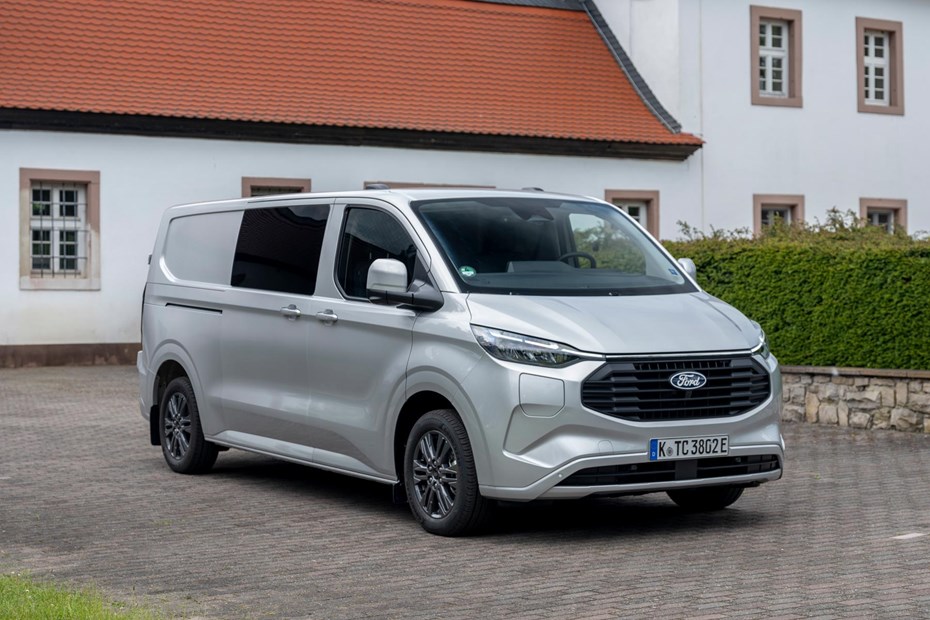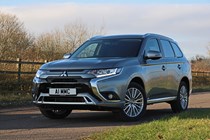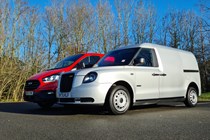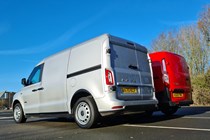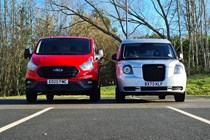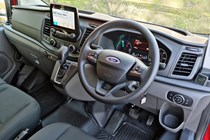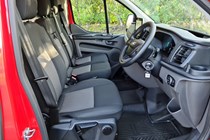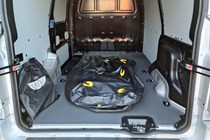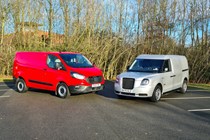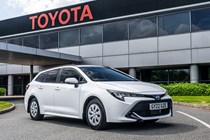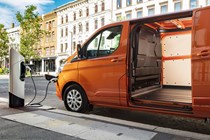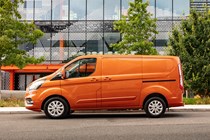Feel it is time to move away from a diesel commercial vehicle but don’t feel ready to go straight to an electric van just yet? The best hybrid vans might well be the ideal stepping stone, given they allow you to plug in part of the time but still have an engine as well.
Hybrids, be they vans or hybrid cars, come with both an electric motor and a conventional engines, normally a petrol one. This means you replenish your vehicle
On this page you can read that test and we’ll talk you through the types of hybrid vans available, how they differ, and which offer the advantages you actually need. We’ll also compare them to pure electric vans and talk about the government Plug-In Van Grant (PIVG) that’s available to subsidise the cost of some hybrid electric van models.
What are the best plug-in hybrid vans?
There’s not a huge choice, but the are now more plug-in hybrid vans on sale in the UK than there were a few years ago. Two of these have had a plug-in version for a while, although the Ford Transit Custom Plug-In Hybrid is an all-new model with a completely revised powertrain compared to the previous version. The LEVC VN5 remains unchanged and is the van version of the London taxi.
Then there is the Ford Transit Connect and Volkswagen Caddy eHybrid, both of which are set to come with a plug-in hybrid. The two brands have an partnership that means these two vehicles share the same basic shape and powertrain.
If you are looking at the used market then you might find a few examples of the Mitsubishi Outlander Commercial, a commercial 4x4 version of the Outlander PHEV passenger SUV. There is also the previous version of the Transit Custom PHEV, but this wasn’t sold in huge numbers either.
What are the different types of hybrid van?
Hybrid vehicles work by adding an electric motor and battery pack to a petrol or diesel engine, and they come in three main types:
- Conventional hybrid electric vehicles of the type that Toyota and Lexus market as ‘self-charging’; these are capable of driving on electric power alone, but only for short distances because they don’t have very large battery packs. This technology is more conventionally used in passenger cars
- Plug-in hybrid electric vehicles (PHEVs) have a larger battery pack allowing them to drive for several miles at a time on electric power; these come in different types, including so-called ‘range-extenders‘, which we’ll get to in more detail in a moment. They’re called plug-in hybrids because you need to recharge that batteries via the mains (though they will drive if you don’t do this, they won’t be very efficient at all)
- Mild hybrid electric vehicles (MHEVs) can’t drive on electric power at all; instead the electric motor – known as a ‘starter-generator’ – is used as a mild engine booster and to enhance the stop-start system
There is only one self-charging hybrid van in the UK and, given that the tech is more widely used in passenger cars it is perhaps little surprise that it only features in a car-derived van – the Toyota Corolla Commercial. It is a straight conversion, so it doesn’t offer a vast amount of loading space or payload, but it also comes with the car-like benefits of the standard Corolla. Namely, it is easy to drive and well equipped.
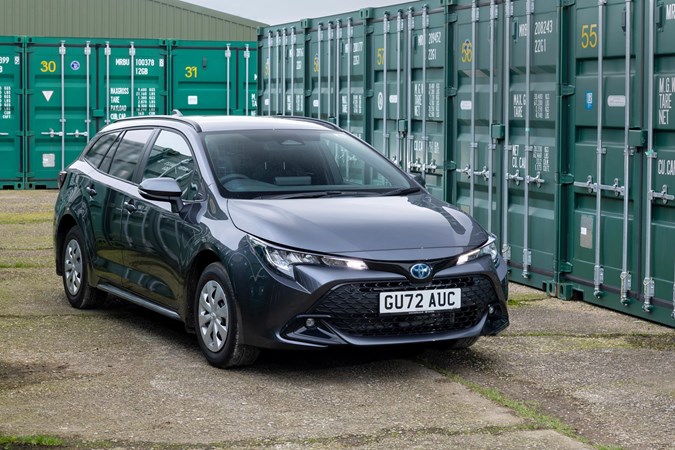
MHEV technology is relatively new and is used as a means of making existing engines more efficient. Plenty of these aren’t even marketed as hybrids any more – they are just vehicles with a bit of battery assistance to take some of the stress off the engine. There have been versions of the Ford Transit and Transit Custom that have employed this approach. e do expect to see more of these in the future – simply because petrol and diesel internal combustion engine (ICE) technology is moving in this direction in order to meet the latest emissions requirements.
However, since mild-hybrid tech doesn’t allow you to drive on electric power – and therefore with zero emissions – it will be no use at all in any future zero emissions zones that may ban any vehicles that can’t drive electrically. As such we’re only going to mention them briefly here.

This leaves plug-in hybrid vans, and while there are only four of these on sale in the UK, they do have proper zero-emissions capability and do claim some amazingly eye-opening fuel-economy figures.
That said, they all also use a petrol engine with the electric motor, rather than diesel. Which means when the electric motor isn’t doing the driving they can be quite thirsty.
Why aren’t there more hybrid vans?
Most van makers have elected not to bother with hybrids and gone straight to building all-electric vans. So most of the models we have seen in recent years have been full-on plug-in. The industry has zero-emission sales targets to hit and hybrids don’t count towards that, even ones that plug in part of the time.
There are some exceptions to this, as Ford is offering a plug-in hybrid version of the new Transit Custom, while the mechanically identical Volkswagen Transporter will also offer the same engine.
The smaller Ford Transit Connect and Volkswagen Caddy work in the same way, although this pair is based on a VW original design, rather than a Ford one. The reason they have gone for a PHEV rather than an electric option is more because of the limitations of the platform. Volkswagen’s MQB platform, which also features under plenty of passenger cars, was never designed to be electric, so if the two companies want to offer something that is lower emitting than a diesel, then a PHEV is the only option.
Hybrid van pros and cons
Compared with a regular petrol or diesel van, it’s the true hybrids’ ability to sometimes drive on electricity alone that makes them stand out. This is good for emissions, improving air quality and enabling charge-free access to ultra-low and zero emissions zones – not to mention complying with ever-tougher legislating. But if used properly, this electric capability should also reduce your running costs.
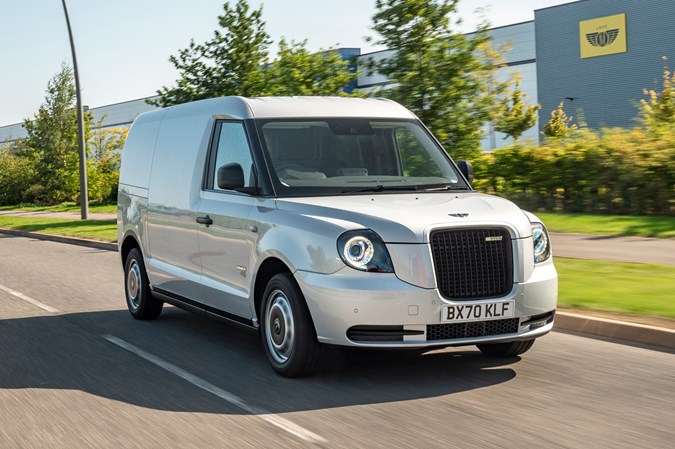
Even with fluctuating prices, electricity is cheaper than petrol or diesel, particularly if you can charge at home or the workplace and avoid the public charging network. The more you can run on electric power the better off you will be. This is part of the reason for the increasing popularity of plug-in hybrids in the car market – though PHEVs do rely on you plugging them in for chunky amounts of time in order to maximise their efficiency.
Compared with pure electric vans, the hybrid advantage is driving range. When the batteries run out, a hybrid van can keep going – albeit less efficiently – while an electric van will be forced to stop and recharge, a time-consuming business, even on the fastest charging points.
When a hybrid needs refuelling you can just stop at a petrol station, as with any other van, which is quicker than plugging in for a full charge.
The disadvantages of hybrid vans start with their complexity. This makes them more expensive to buy and heavier, which reduces payload – though 100% electric vans are inevitably heavier still as they have bigger batteries. If not used correctly, hybrid vans aren’t especially fuel-efficient, either.
Using a petrol engine to drag around a reasonably big van is already a bad start even before you add the extra weight of the hybrid technology. You will need to keep the batteries charged as much as possible and use them when most appropriate on your journeys – fortunately all hybrid vans come with different driving modes to help you do this.
Are there any hybrid pickups?
Not at the moment. However, there is one on the way, as Ford has confirmed that is is slotting one of its plug-in powertrains into the new Ranger. You should be able to buy a Ranger PHEV from 2025, and it will be the first plug-in hybrid pickup of any sort.
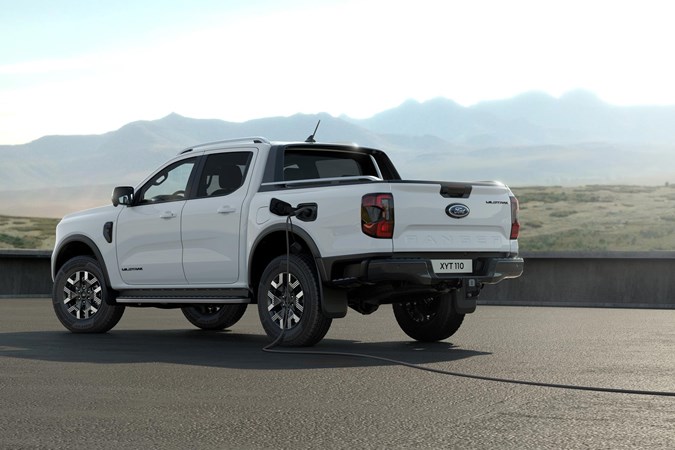
This engine and motor combo is slightly different to the one that will be in the Ford Transit Custom PHEV, with a 2.3-litre engine rather than the 2.5-litre version that sits in the van. This is said to be because the former is more suitable for off-roading. It will also feel notable different to other pickups as it is a petrol, rather than a diesel engine, as is the case with most PHEVs.
As things stand it has not been confirmed whether the VW Amarok will also take this powertrain although it will surely be an option available for the company given that the Amarok is another VW that is basicalla Ford underneath.
Ford Transit Custom Plug-In Hybrid vs LEVC VN5 vs Ford Transit Connect vs the Volkswagen Caddy – which is the best hybrid van in the UK?
There are now four major plug-in hybrid vans to choose from in the UK, although at the time of writing we have only driven two of them – the two that have been round the longest. The Ford Transit Custom and the LEVC VN5 are the established names, although the former is now in its second iteration. They will be joined by the Ford Transit Connect and the Volkswagen Caddy.
The latest generation of Ford Transit Custom has taken up where the predecessor left off but with a big stride forward in many areas. In that sense, the PHEV version advances the cause in the same manner. The latest model offers much more in many areas, including the plug-in powertrain. This time around it comes with a much bigger petrol engine as part of the setup, with a 2.5-litre unit rather than the comparatively puny 1.0-litre from before.
This is not an all-new untested powertrain, though, as it is the same pairing that you would find in the Kuga SUV.
The LECV VN5, is perhaps less familiar. It’s a van from the firm that makes the famous London taxi, as you would probably have guessed from the look of it. LEVC is backed by Chinese automotive giant Geely, which also owns Volvo, and the VN5 is built in Coventry.
The VN5 is, strictly speaking, a range-extender vehicle rather than a plug-in hybrid in the traditional sense. This means that the only thing that ever drives the wheels is the electric motor; the petrol engine under the bonnet only functions as a kind of back-up generator, providing additional electricity when the batteries run out.
To this end, LEVC prefers its VN5 to be referred to as an electric van, rather than hybrid. There aren’t many other electric vehicles that carry around an engine, though, so we’re sticking to coparing it to other plug-in hybrids.
The Ford Transit Connect and Volkswagen Caddy are the same van but it was the VW that came first. We haven’t driven either of these in plug-in hybrid format just yet though.
Which hybrid van is most practical?
In pure size terms, there are three different categories covered off by the four vans here, although that doesn’t tell the whole story either.
The Ford Transit Connect and the VW Caddy have very little between them, being basically the same vehicle bar the badging and some variances in spec. The loading bay and cabin are the same size and shape and we class them as small vans – rivals for the likes of the Citroen Berlingo and Renault Kangoo, among others.
At first glance, you’d be forgiven for thinking the LEVC and the Ford Transit Custom two vans are far from direct rivals – in isolation, the VN5 has the looks and proportions that make it seem like a small van, while the Transit Custom is clearly a medium van, like the Volkswagen Transporter or Vauxhall Vivaro.
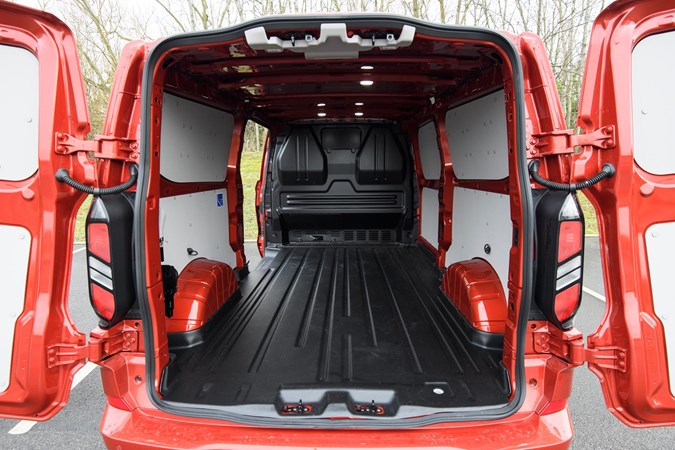
But park them side-by-side, and it turns out the VN5 is actually longer and taller than Transit Custom on the outside. And while neither is what we’d call cheap, the LEVC is a substantially more expensive product.
Despite this, if you want maximum load space, the Ford is the way to go. Just as the previous version was, it is a more conventional van shape with a raised cab and a short bonnet, making room for a 5.8 cubic-metre load area that’s larger in every direction – most notably width. The latest version has a few practical tweaks to make it easier to live with, too, such as a new side step to make getting in and out simpler.
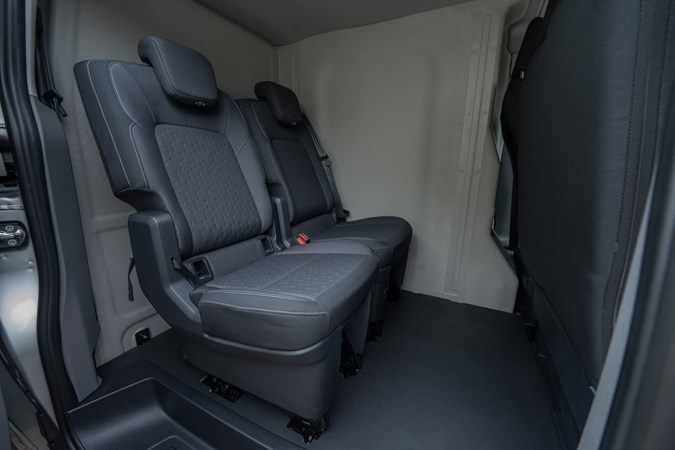
It also comes with the option of a genuinely innovative bulkhead layout. The Multicab model has an L-shaped divider between the passenger area and the loading bay meaning there is space for two seats in the second row and a full-length section of carrying room.
The VN5 has a 5.5 cubic-metre cargo space, which doesn’t sound much less until you see it – which you can in detail in the gallery at the top of this page. That’s a boot bag in the pictures not a body bag, incidentally, but its 1,556mm length should help you gauge the space inside both vans – and the side door opening width. There’s a full comparison table of the vans’ dimensions below.
Where the Transit really carries an advantage, so to speak, is payload. With a maximum payload rating of over 1,350kg it can carry nearly 50% more than the VN5, which has a maximum payload rating of only 830kg.
Which is the better electric van?
None of these are electric vans in the strict sense of the word, despite what LEVC might try and say. None will be afforded all the benefits of being a pure EV, such as the lower tax rates.
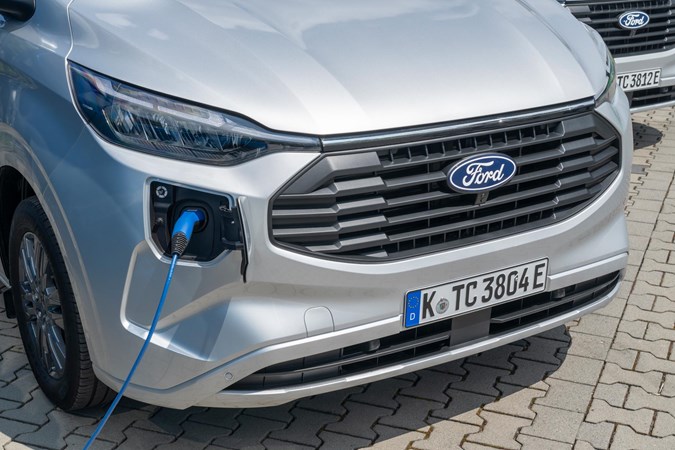
However, if it’s maximum electric vehicle capability you’re after, the VN5 has the Transit Custom thoroughly licked. The taxi-based van has a battery pack that’s more than double the size of the Ford’s (31kWh versus 11.8kWh) which gives it almost double the WLTP range – 61 miles versus 35 miles.
It’s also worth noting that the LEVC VN5 still qualifies for the Plug-In Van Grant (vans need to be able to cover at least 60 miles on electric power alone. This means you will have to pay full retail price for the two Fords and the VW, while the LEVC is still available with a government subsidised discount.
This is expected to be the case with the Caddy and the Transit Connect but too, although it won’t be confirmed until closer to their launch in early 2025. The SWB version is likely to qualify for the smaller discount while the LWB should be eligible for the larger one.
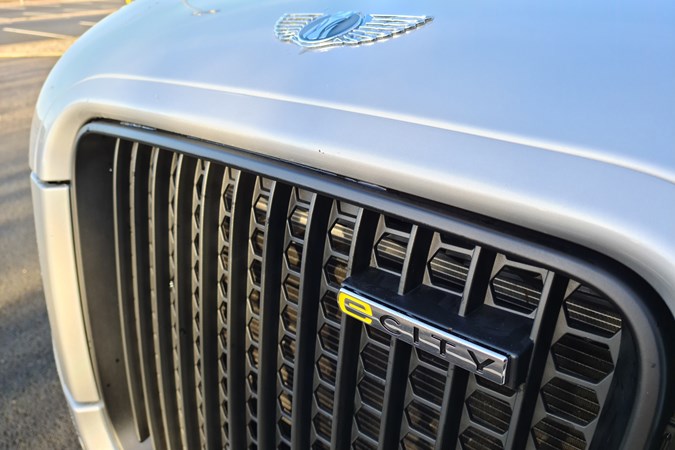
The official fuel economy ratings are all quite high, but this assumes you make the most of the electric capability, of course. The official figure for the LEVC is 382.8mpg for example, while the Custom is 176.6mpg. But if you run both the battery and fuel tank to empty every time you refuel it then you won’t see anywhere near that – you need to plug them in a lot more than you refuel otherwise it will be a pricey business.
That’s the case with any PHEV, though, and a choice of driving modes will help you make the most of what the batteries can do – by allowing the vans to make decisions automatically or selecting the best time to deploy their zero-emissions powers.
Which is better to drive?
We’ll keep this to the Transit Custom and the LEVC for now, as we have yet to drive the others. They are two vans that are very similar in concept, but the execution is remarkably different – and this extends to the way they deploy their power.
Each uses an electric motor and a petrol engine. But the Ford’s is much bigger and it shows in how smooth and effortless it feels – the transition between the two is hard to notice.
Speaking of those wheels, the Ford is front-wheel drive (FWD) while the LEVC is rear-wheel drive (RWD) – in fact, the motor is mounted back there, hence it has a slightly higher load floor than you might expect.
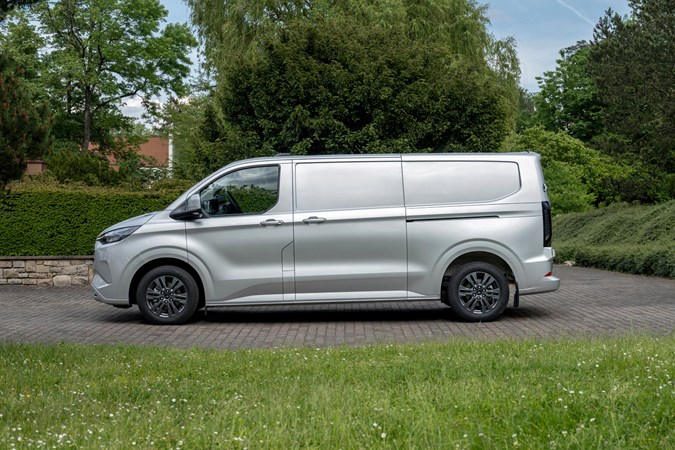
Sharing a trick steering set-up with the taxi means the VN5 also has a crazy-tight turning circle, which is one of those things you don’t know you’re missing until you’ve experienced it. There are a lot more electronic noises in the LEVC, though, making it seem a slightly less polished product.
The Transit Custom has always been a very impressive thing to drive and the latest version has really enhanced this. It feels as though it sits slightly lower than the previous model, which enhanses its cornering ability and it rides fantastically. The quality of the chassis tuning really shines through.
It’s the VN5’s suspension that runs out of ideas more abruptly on bumpier roads, the firmness of its suspension turning to sharpness and then a distinct lack of sophistication when it comes to dealing with rippled surfaces.
Neither van is going to give you grief on motorways or in city centres, but it’s the bigger, bulkier looking Transit Custom that feels happier hacking around on country lanes, delivering a more rounded overall driving experience.
What are they like inside?
The Transit Custom isn’t a class-leading product for no reason. The cab is spacious, seats three and manages to feel well made, appear good-looking in a rather un-van-like way and still offers plenty of practical storage.
The latest version has drastically upped its game in terms of the quality of tech and practicality. That big central screen is standard fit, while the floor is totally flat throughout the cabin, which allows for easier access across the width.
There are some clever touches, too, such as the folding steering wheel – the rim can be positioned horizontally to turn it into a little table for your laptop or lunch. The lack of physical handbrake and gear lever in the automatic version means that the middle-seat passenger gets a level of legroom that is rare in a van.
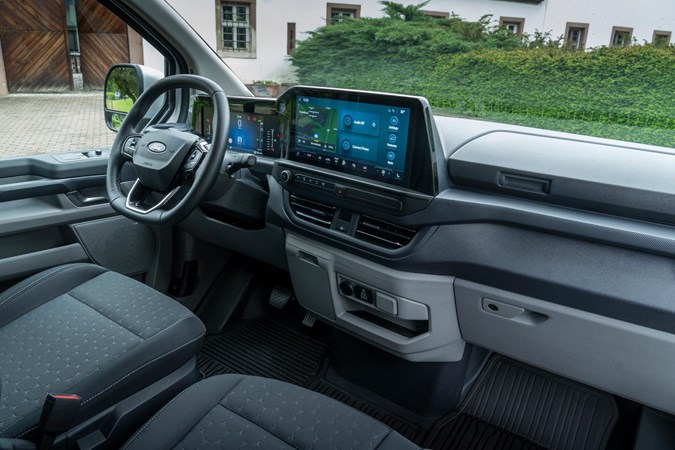
In the VN5 you’re lower to the ground, with a long, low bonnet in front of you – giving you good forward visibility and making it easy to position the van on the road. However, the cab only seats two, feels comparatively cramped and doesn’t even have a proper glovebox. The door mirrors are tiny, too, not a patch on the large, twin-lens items Ford equips you with to keep an eye on the road behind and the kerb near your wheels.
LEVC does have a number of fancy features in its favour, though. These include a fully digital instrument cluster and a large, upright touchscreen infotainment system that, like much of the switchgear, comes directly from a Volvo. It all feels well made, too, though we did find the sliding side door less easy to shut than the Ford’s.
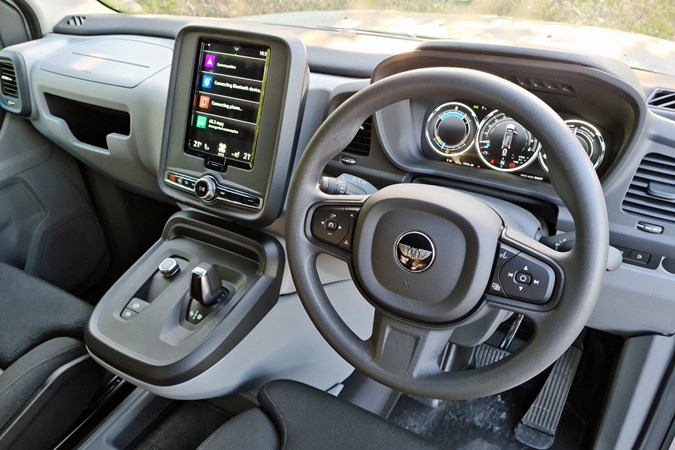
Almost all of the in-cab controls in the VN5 are situated within the touchscreen. This is something we’d usually be very dubious of, but actually this is all done extremely well, with large digital buttons and impressive responsiveness. Even if it’s still not quite as easy as reaching out and touching a dial like you do in the Transit Custom when it comes to adjusting the heating, you would get used to this quickly, we feel.
Which hybrid van is best?
The previous Transit Custom PHEV had the edge over the LEVC, so the 2024 version moved the Ford further ahead. It carries more, feels more premium and well-made inside, offers more space for driver and passengers, and has just that bit more polish to its driving experience. It’s a genuinely appealing alternative to a fully electric van.
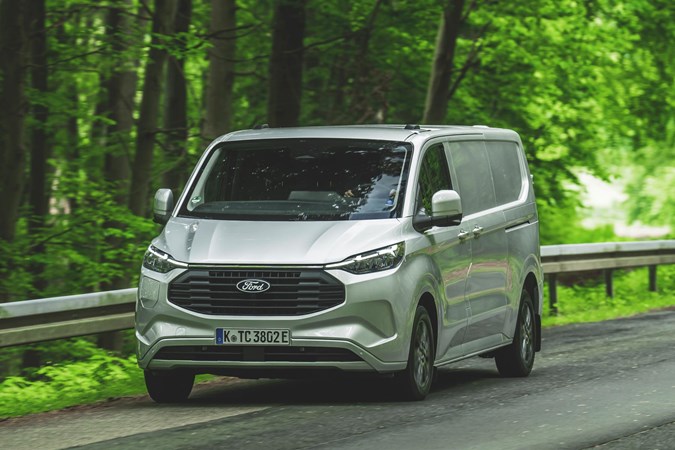
But the LEVC VN5 still has skills the Ford can’t match. Double the electric range is certainly something that shouldn’t be ignored, while the clever steering and additional performance are not to be sniffed at, either. The distinctive image the VN5 presents may even help put more eyes on your business, and in terms of load space it’s really not that far behind.
Where the VN5 does struggle by comparison, as a total newcomer to the van world, is with the supporting dealer network. Ford has the greatest number of service centres in the UK, LEVC one of the smallest.
Though it has ambitious plans to expand, and makes bold claims about the lifecycle of the VN5 – giving it a five-year / 150,000 warranty to back this up versus Ford’s three-year / 100,000-mile cover (both guarantee the batteries for eight years) – this lack of local support will be enough to rule the LEVC out for a lot of businesses.
If you can make the VN5 work from this perspective, it is most definitely worth a closer look. But for now, our pick would still be the Transit Custom, the success of this Plug-In Hybrid model being yet another string to the bow of Ford’s superb all-rounder.
Hybrid van comparison table
| Transit Custom PHEV | LEVC VN5 | |
| Exterior length | 5,050/5,450mm | 5,233mm |
| Exterior height | 1,968/1,966mm | 1,990mm |
| Width with mirrors | 2,275mm | 2,083mm |
| Max load length | 2,602/3,002mm | 2,447mm |
| Max load width | 1,777mm | 1,574mm |
| Between wheelarches | 1,392mm | 1,109mm |
| Load volume | 5.8/6.8 cubic metres | 5.5 cubic metres |
| Rear door height | 1,314mm | 1,272mm |
| Rear door width | 1,400mm | 1,253mm |
| Max power | 232hp | 150hp |
| Max torque | 355Nm | 240Nm |
| Official WLTP mpg | 176.6 | 314 |
| WLTP electric range | 34 miles | 61 miles |
| Battery size | 11.8kWh | 31 |
Just so you know, we may receive a commission or other compensation from the links on this website - read why you should trust us.


